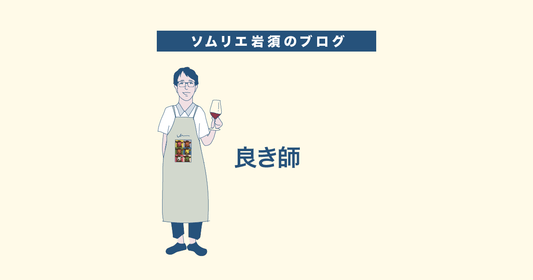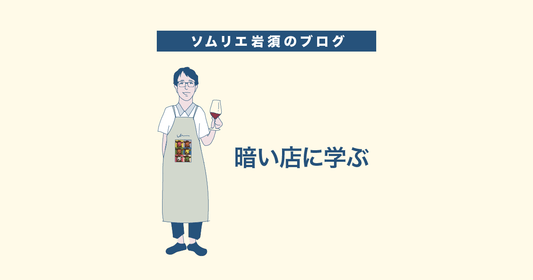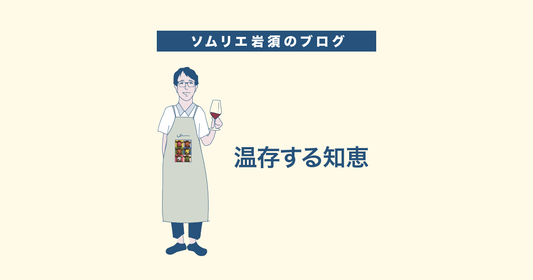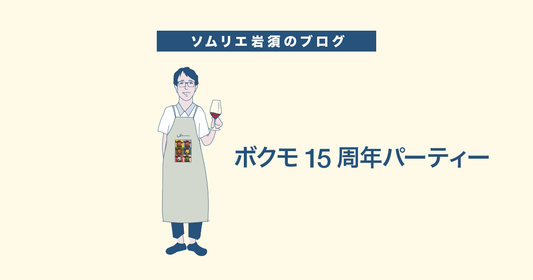
The exciting season for the wine industry has arrived.
Beaujolais Nouveau? No, it's still a little early for Nouveau.
The buzz around this time of year is about what kind of wines will be asked in the second exam of the Sommelier Exam and Wine Expert Exam .
Those who are knowledgeable about wine will already know about this exam, but I'm sure there are some who aren't, so I'll give a brief summary.
The "Sommelier Exam" certified by the Japan Sommelier Association is for people who have worked in the food and beverage service industry or related fields for a total of three years or more.
The other "Wine Expert" exam has no hurdles and anyone can take it. It is said to be about the same level of difficulty.
People often ask me, "Is studying for the sommelier exam hard?" but no, studying for the wine expert exam is even harder!!!
We work in a job that involves dealing with wine on a daily basis, so we can study it as an extension of our job, but those of you aiming to become experts will have to incorporate wine into your regular work.
The difficulty level of the exam is the same as that of a sommelier, a food and beverage professional. You can't pass this exam unless you study hard.
That's why I unconditionally respect anyone who has an expert qualification, thinking of them as "someone who has worked much harder than me."
The first test for both the "Sommelier" and "Wine Expert" exams consists of multiple choice questions that test knowledge.
The second exam for the sommelier qualification consists of a tasting test and an essay test, and the third exam consists of a practical service test.
The "Wine Expert" exam is up to the second test, "tasting." This is the only test that determines whether you pass or fail.
So, getting back to the main topic, this year yesterday, Monday, October 12th, was the day of the second exam, or tasting, for "Sommelier" and "Wine Expert".
Every year, the wines that are produced here become a hot topic in the wine world.
"Wow, seriously?! Such a rare variety is available?!"
"I see, as expected, there is at least one question that is a standard and easy to understand one."
"I thought that place hadn't come up in the question for the past few years, but it did come up this year!"
The test takers and those with the qualifications talk about the wines that are given to them. And those topics become the perfect accompaniment to the wine .
The test involves accurately selecting descriptions of the wine's appearance, aroma and taste, and ultimately guessing the wine's region, grape variety and harvest year.
Among these, the focus is on the three elements of "harvest year, production area, and variety," with the correct answers to be published online on the day of the exam .
In my case, I usually just look at it from the side and think, "Oh, so this is what the recent trends are like." I think, "If this question was asked, I might be confident," or, "No, if this question came up, it would be difficult," and that's it.
But this year is different. Very different.
That's because "New Zealand Pinot Noir" was included in the "Wine Expert Tasting Exam" !!!

Source: Japan Sommelier Association website
Wine Expert Question No. 4!
Seriously?! I thought.
In fact, New Zealand Pinot Noir was included in the "Sommelier Tasting Exam" in 2015. At that time, I thought, "Wow! New Zealand Pinot has finally been selected as a wine that test takers should know about!"
However, five years later, this year, the question was asked again, this time for wine experts. This is finally happening.
You know what I'm talking about, right? Yes, it's Blake .
Sauvignon Blanc , a white wine from New Zealand, is known to those who know about wine as having a unique flavor that is unlike anything else in the world . It has been included in exams three times in the past 10 years, so it is a wine that is treated as a lucky question .
However, because of this, I couldn't shake the image of New Zealand being a country that only produces Sauvignon Blanc . This is because New Zealand's unique character is so distinctive.
The red wine "Pinot Noir" breaks through the impression that New Zealand is a one-dimensional country . In fact, the high quality of New Zealand Pinot Noir is well known among professionals, and the country is one of the three major Pinot producing regions in the world .
However, awareness among the general public is still far from sufficient. That is where this question came in. The question was asked in 2020 for the Sommelier/Wine Expert Examination, which is an entry test into the wine industry, following on from 2015, and I think that if it is asked again in 2020, it will become widely recognized that these are "very important wine producing regions and varieties."
Wow, this is definitely going to be a big hit . I think the time has finally come when New Zealand wine will attract a lot of attention in Japan!!!
I hope that happens. I hope that this website will be visited by many people and that it will be useful to those who want to know more about New Zealand Wine!
It makes me think of such things.
The only thing that I am personally curious about is "where in New Zealand" the Pinot Noir in question is from.
A little explanation: There are three main areas famous for producing Pinot Noir in New Zealand.
1) Central Otago
The southernmost cold wine-producing region. However, it has plenty of sunshine in the summer and is dry. Pinot Noir, a finicky variety, grows very well here. However, the prices are a little high. High-end wines are usually over 10,000 yen.
2) Martinborough (Wairarapa)
It is said to be a miraculous Pinot-producing region with the same climatic conditions as Burgundy. It is a very small producing region, and the wine is very expensive.
3) Marlboro
This is a wine-producing region that produces about 80% of New Zealand's wine. It is overshadowed by the overwhelming popularity of white Sauvignon Blanc, but there is also a good selection of Pinot, which is delicious. Some are reasonably priced.
Considering this, 1) and 2) are good and expensive. Some of 3) are not so expensive. If you use the exact same wine at 16 test sites nationwide, it would be difficult to use small-scale production or high-end products. Therefore, I think that 3) from Marlborough is the favorite .
The typical style of Marlborough Pinot Noir is full of fresh fruity notes like raspberries and dark cherries , and has a strong fruity feel when you put it in your mouth. The aftertaste is gentle and the astringency is soft. That's what it feels like.
However, the actual brand used in the test is not disclosed, so it is not known whether it is actually made in Marlborough.
Hmm, I'd like to know.
Not that knowing this will do any good, but I think the wines selected by the Japan Sommelier Association in their tests convey the message , "These wines have a New Zealand flavor to them, so make sure you capture that."
As someone who has had experience with a variety of Pinots from around NZ, I'm really curious as to which Pinot the Japan Sommelier Association considers to be "quintessentially New Zealand".
Eh? Doesn't that bother you at all?
Ah, right. You're right. It got too heated.
I'm starting to realize that this is a topic that most people won't care about, so I'd like to wrap it up for today.
What I wanted to say was...
New Zealand Pinot Noir has become a "must know wine" as it has appeared on exams twice in the last five years! It's sure to become a hit!
Maybe next time I should talk about something less nerdy. I need to find a balance. Speaking of pop topics this time of year... I think I'll talk about Beaujolais Nouveau.





